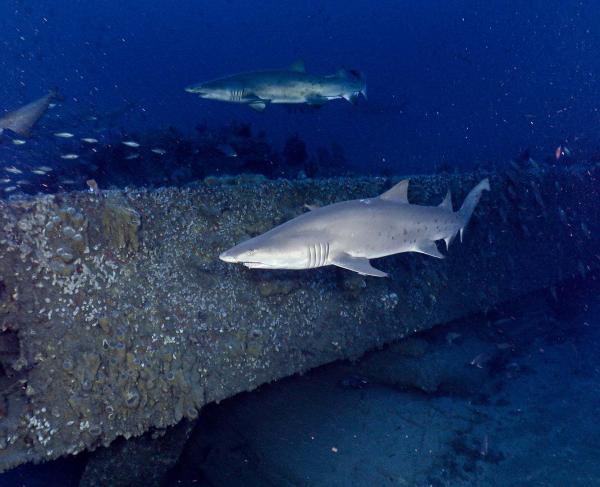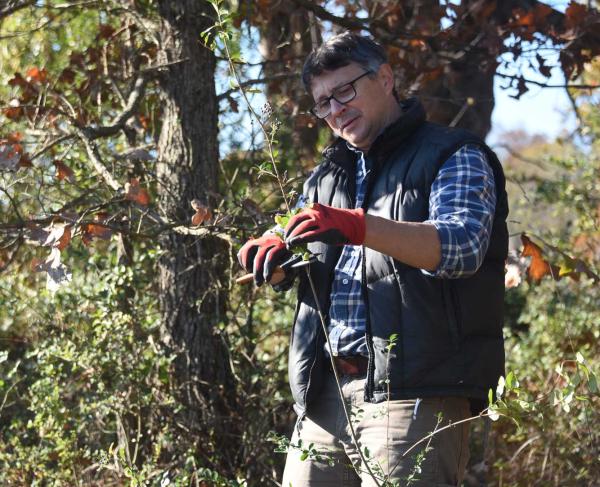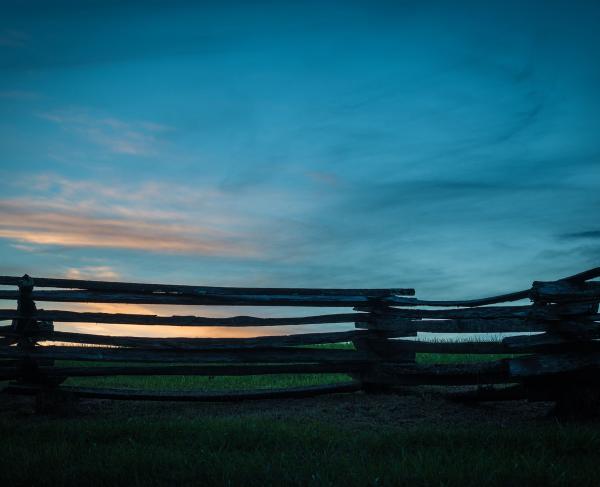Fighting for Our Battlefields, and Our Planet
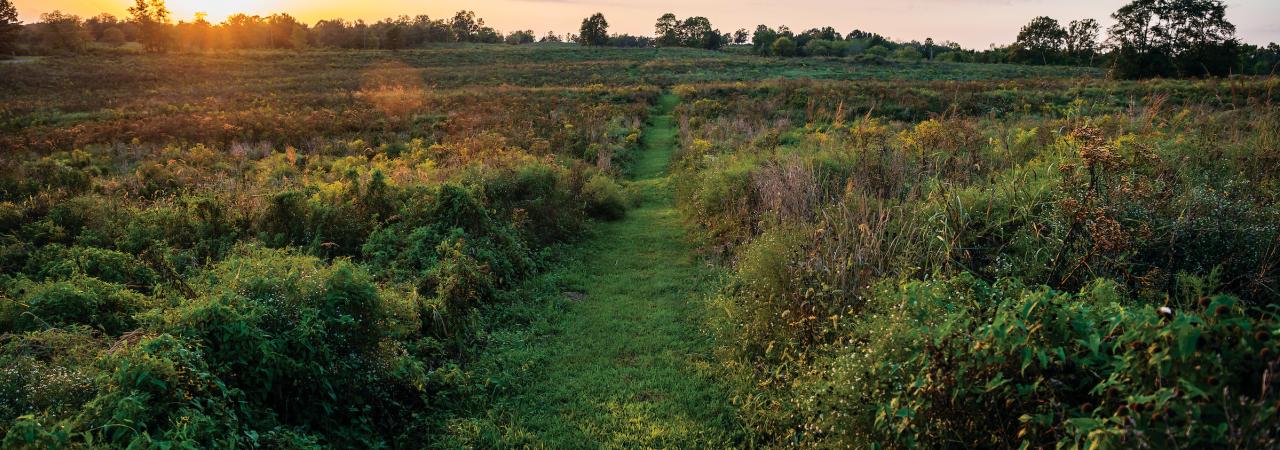
Preserving hallowed ground does more than protect land of historical value — it promotes the conservation and sustainable management of ecological resources. In addition to staving off development that threatens the destruction of valuable ecosystems, the American Battlefield Trust has pursued stewardship and noteworthy partnerships to ensure that preserved lands provide publicly accessible green spaces for our communities and flourishing environments for the plants and critters that call them home.
Linked together by shared methods, goals, and successes, historic preservation and environmental conservation work in harmony to safeguard landscapes that authentically interpret the events of the past and contribute to functioning and healthy ecosystems. As Earth Day recognizes the good we can do for our planet, the Trust has time and again stepped up to fulfill this call to action by caring for preserved battlegrounds in a way that highlights their natural features and improves our climate and human health.
Protecting Butterflies at Perryville
In 2021, the Trust transferred 384 acres of Perryville Battlefield to the Commonwealth of Kentucky, finalizing a two-decade process of individual transactions and restoration work to remove modern structures. These tracts, the largest enlargement of the state battlefield since its 1936 creation, preserve valuable habitat spaces, offer a forested watershed with improved water quality and connect the park with the Chaplin River, providing an access point for fishing, kayaking and canoeing.
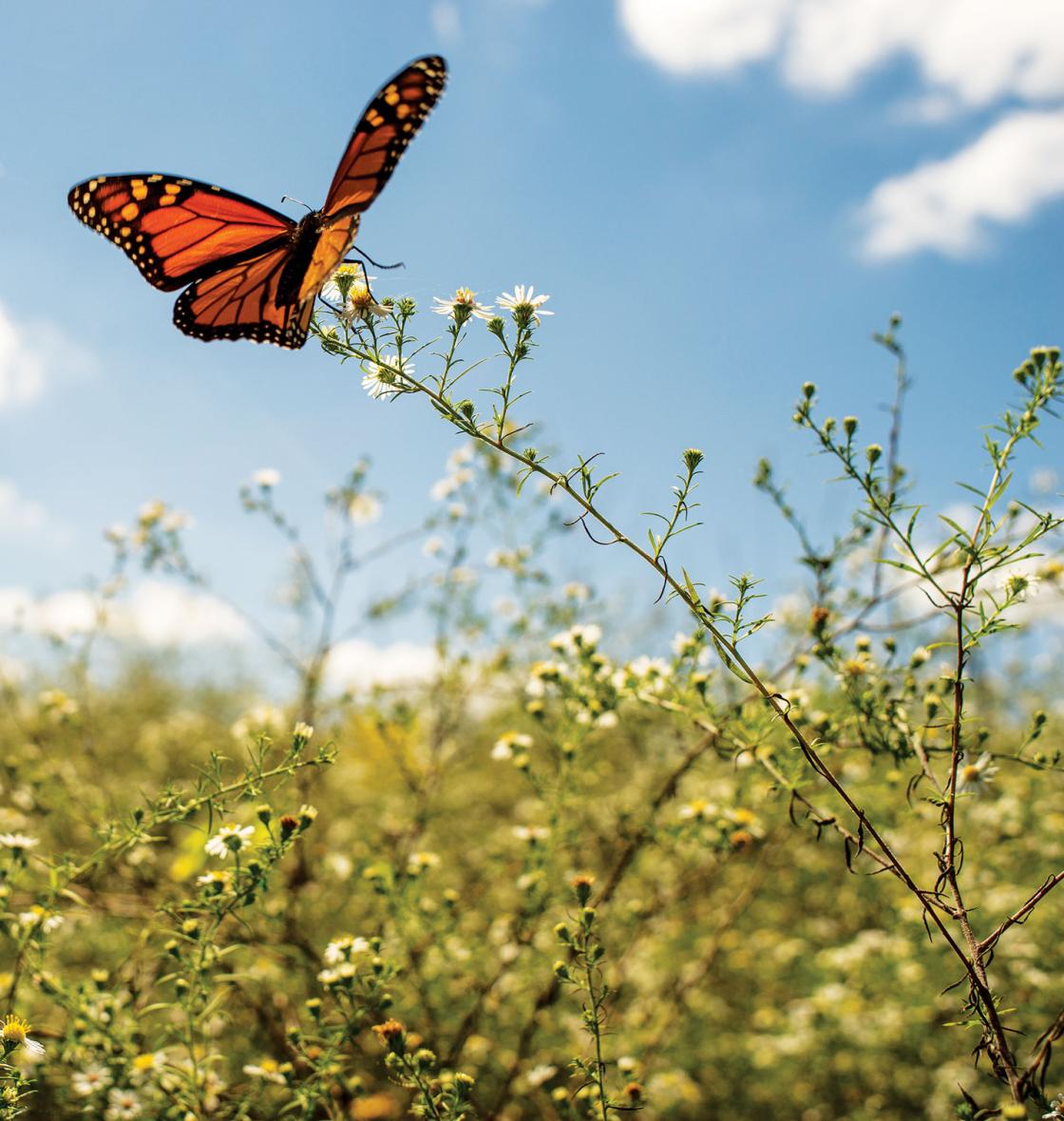
Beyond the bats, insects, and birds — such as bald eagles and Henslow’s sparrows — that benefit from Perryville’s expansion, the migratory monarch butterfly has thrived across the battlefield. In Kentucky, native grassland fields with wildflowers serve as springtime breeding grounds for monarchs on their northward migration and fall waystations for the butterflies flying south for the winter, which has made Perryville one of the most important monarch habitats in Kentucky. So, by saving battlefield land and restoring habitats, the Trust can proudly say it has contributed to the future viability of monarch migrations at Perryville.
Reconstructing Forests at Antietam
Returning altered battlefield grounds to the look and feel of their wartime past often bestows immense ecological benefits, in addition to interpretative value. By removing invasive species, planting native grasses and rehabilitating ecosystems, these lands are made more historically authentic and environmentally stable.
At the Antietam Battlefield in 2017, the Trust partnered with the Maryland State Highway Administration and the National Park Service to plant 1,689 trees across two properties, recreating the East Woods that witnessed heavy fighting on September 17, 1862.
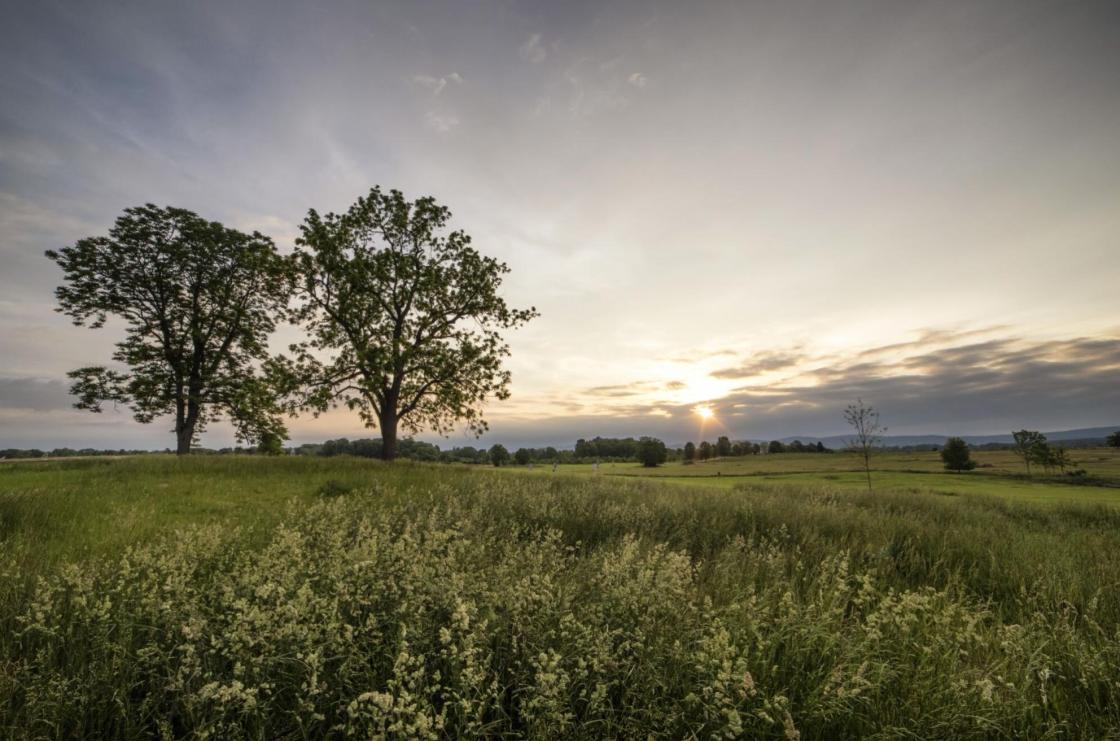
Planting native trees such as American hornbeams, hackberries, hawthorns, maples, oaks, redbuds, serviceberries, and sumacs revitalized the terrain and added stunning natural colors to the park in the fall. Of note, in addition to restoring the historical appearance of the battlefield, these trees sequester carbon throughout the year.
Each year, a mature live tree can sequester more than 48 pounds of carbon dioxide, meaning that at Antietam alone, the Trust has contributed to an annual reduction of over 40 tons of greenhouse gases from the atmosphere.
Environmental Breakthroughs at Petersburg
After acquiring 426 acres at the site of the April 2, 1865, Petersburg Breakthrough, the Trust implemented a nearly two-and-a-half-year project of removing a derelict hog farm and non-historic railroad bed, cutting 152 acres of timber from a mismanaged lumber operation and conducting controlled burns to reveal battlefield rifle pits.
These dismantling efforts were matched by the replanting of native fescue grasses and shrubs, installation of more than one-and-a-half miles of interpretative and connective trails, and restoration of wetlands through vegetative tree buffers. The reintroduction of open fields and native grasses provided an ideal habitat for the return of Bachman’s sparrows, while responsible wetland management helped spotted turtles — both critically endangered species.
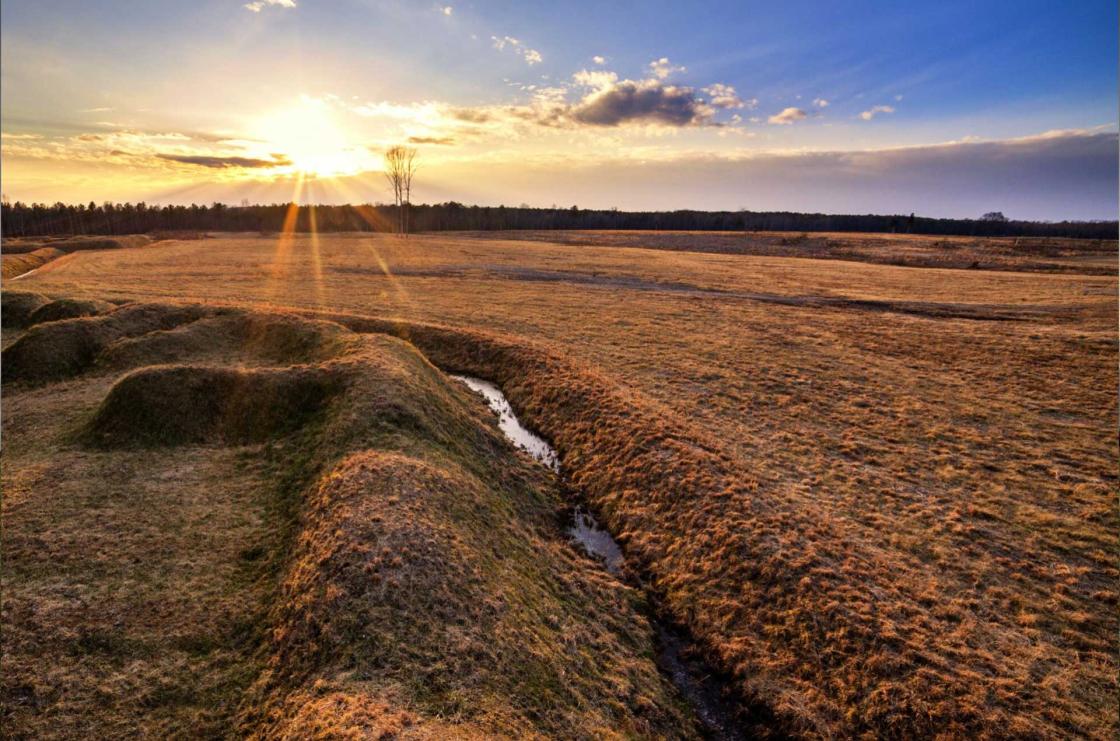
In addition to the wetlands, swamps, ponds and streams throughout the Breakthrough, the preservation of this battlefield land helps protect the water quality of the Piedmont and Blue Ridge Crystalline-Rock Aquifer. Furthermore, the removal of an abandoned animal waste plant on the property has made a major contribution to reducing algae pollution in the rivers and streams of the Chowan Watershed, allowing for the healthy growth of native water grasses, fish and mollusks.
By removing the remnants of poorly managed human activity and introducing proper stewardship of the Petersburg Breakthrough property, the Trust improved the health of threatened wildlife with effective habitat rehabilitation and bettered human well-being with mitigative measures for water quality and the expansion of walking trails.
Fortifying the Bluffs at Fort Blakeley
Located along the Tensaw River, Fort Blakeley was the site of one of the last battles of the Civil War. In 2020, the Trust facilitated funding from the American Battlefield Protection Program for The Conservation Fund’s purchase of 60 acres where a crucial assault led by the U.S. Colored Troops occurred during the battle.
This land, the Blakeley Bluffs, was transferred to the University of South Alabama through a conservation easement to conduct archaeological investigations regarding the site’s significant role in African American history while restricting future development.
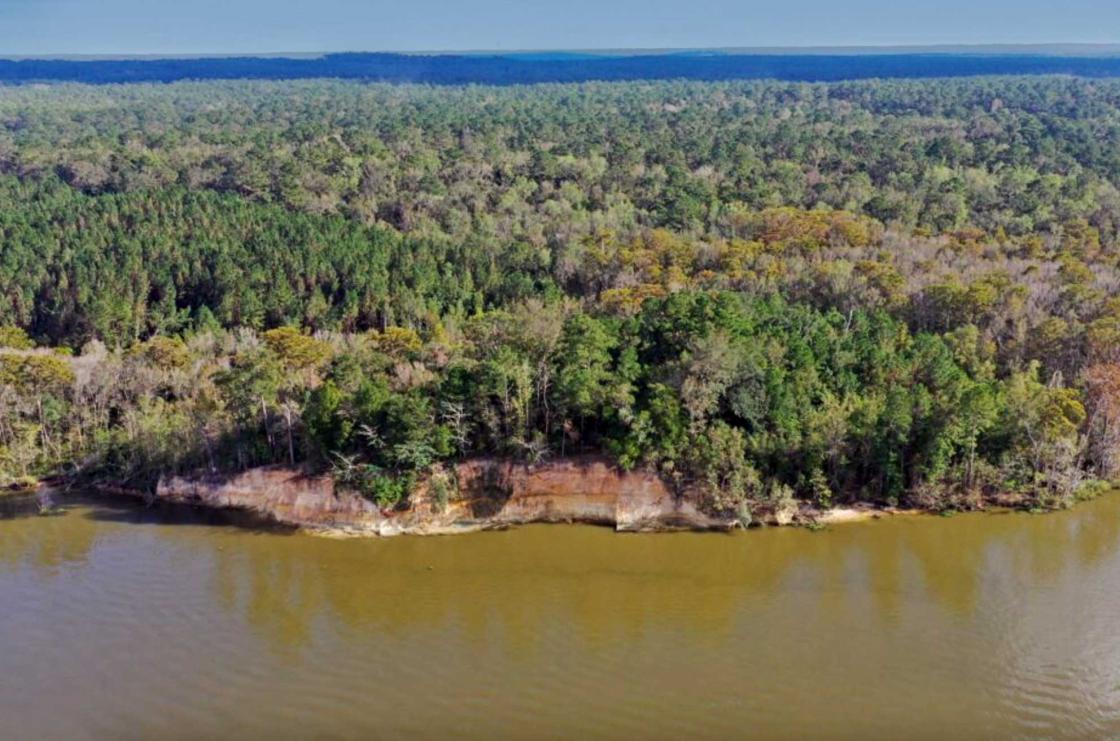
Containing hardwood cove ravines, blackwater swamps and pine uplands, as well as some of the highest bluffs in Alabama, these broad cliffs overlooking the water are a unique resource combining historical, archaeological and scientific value. The property’s ravines consist of some of the area’s best-preserved forests, and contain diverse plant species including lilies, hibiscus, orchids and rare Alabama dahoon holly.
Fort Blakeley demonstrates how battlegrounds are not static but constantly providing valuable educational and ecological functions that enhance our understanding of history and allow natural environments to safely flourish and grow.
Battlefields Mean Ecosystems
From increasing carbon sequestration to improving water quality, removing invasive species to assisting endangered creatures, encouraging sustainable agriculture to creating equitable access to outdoor spaces... the fight to preserve American battlefields protects our shared history and planet. Innovative solutions are required in the battle against environmental and climate threats. But when these efforts help promote the health and happiness of current and future generations — who can serve as stewards and supporters of these sites and their historic and ecological resources — it is easy to see how worthwhile the continuous fight is.
